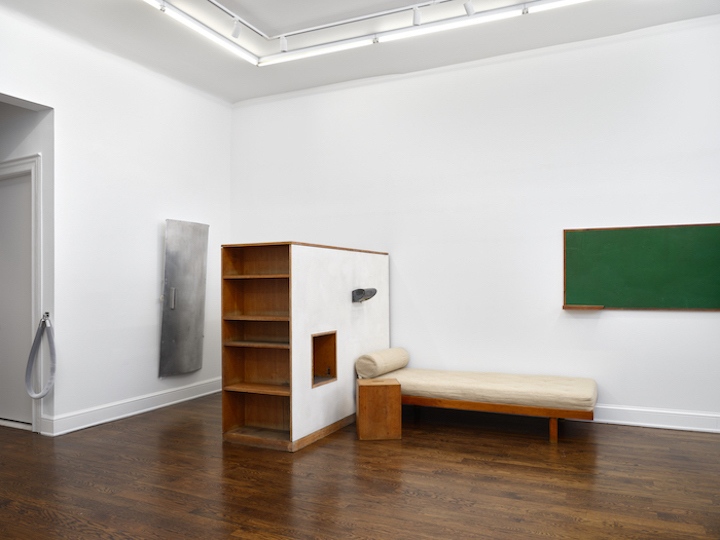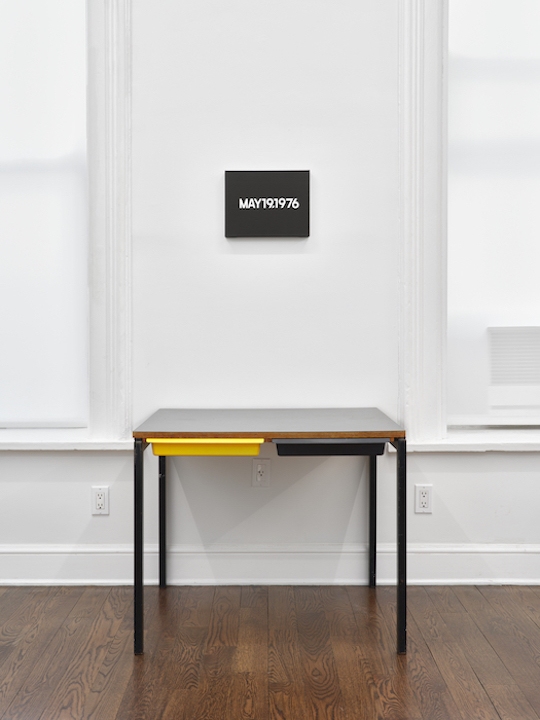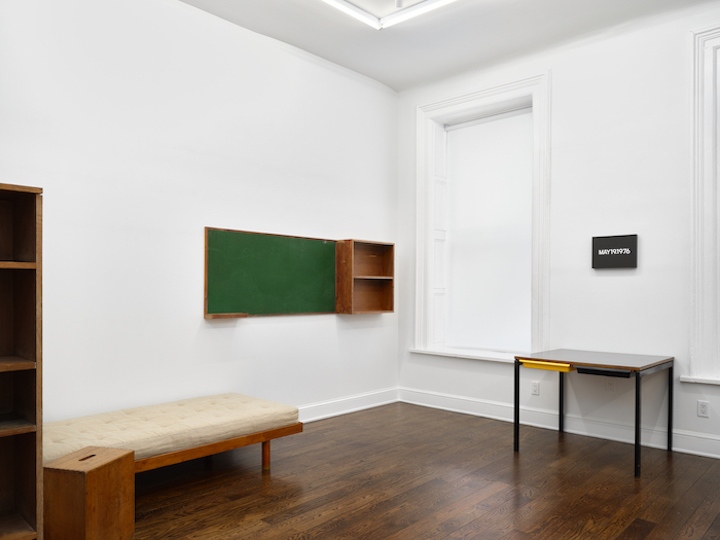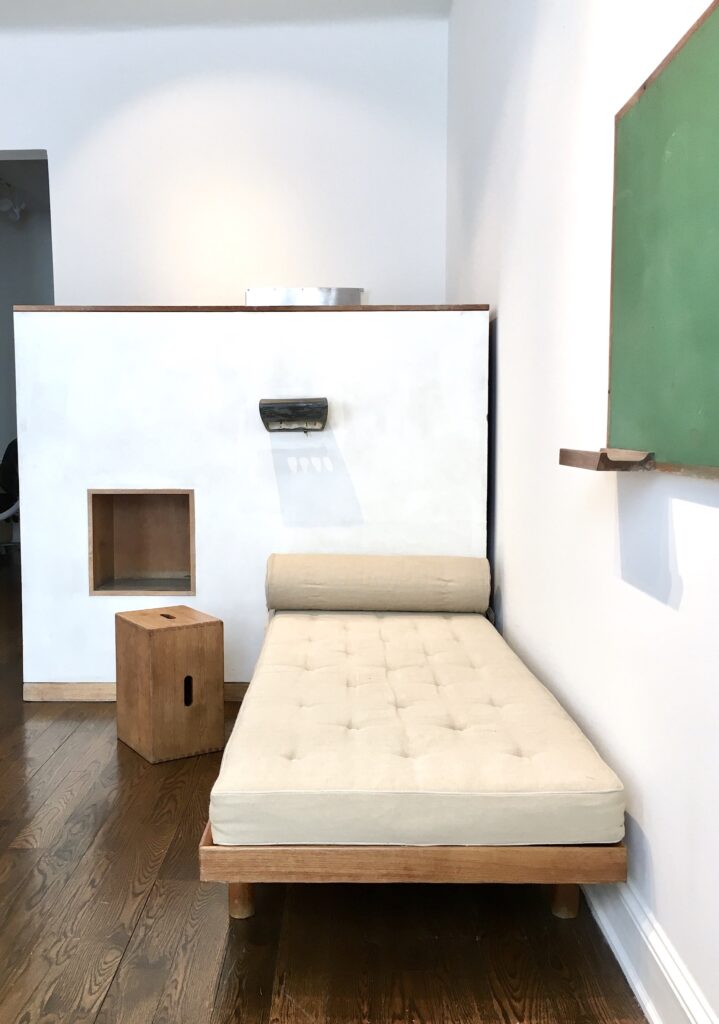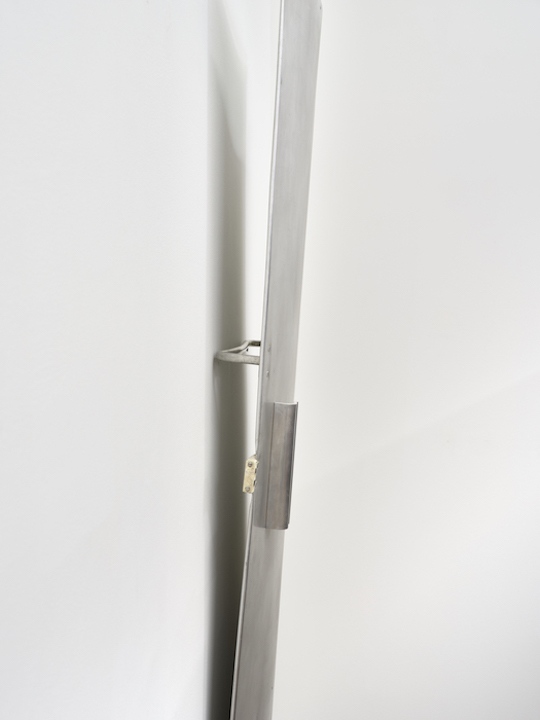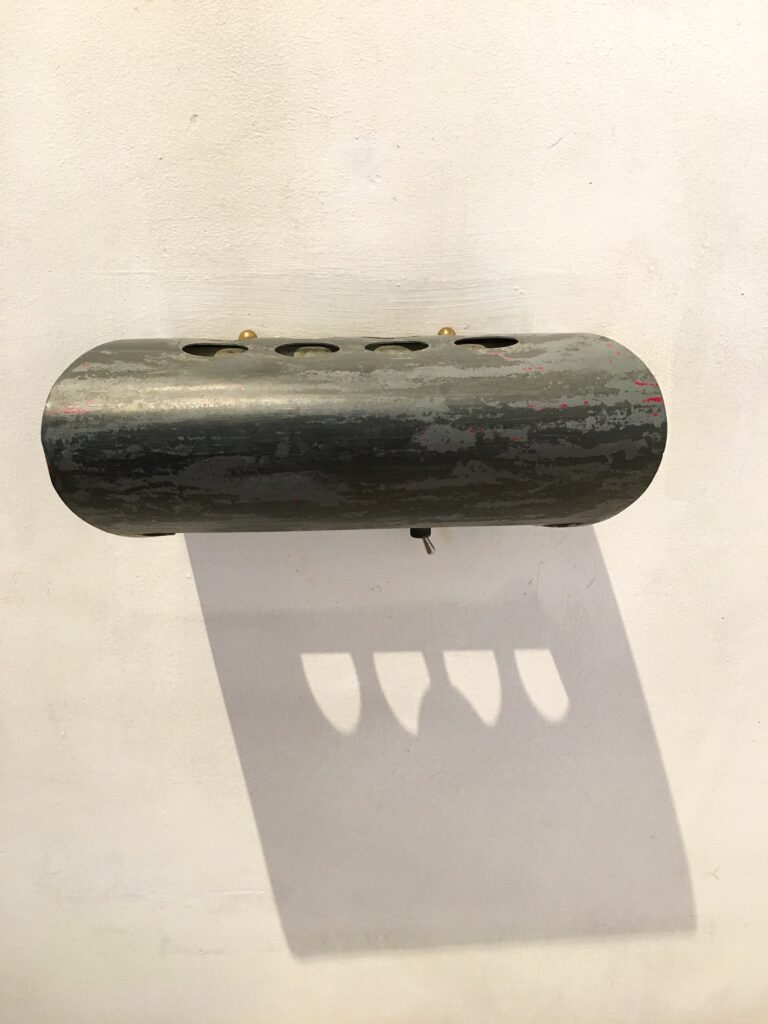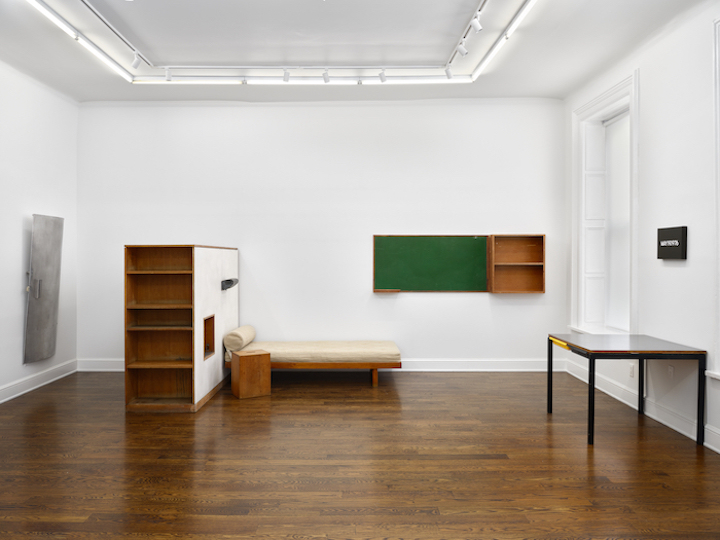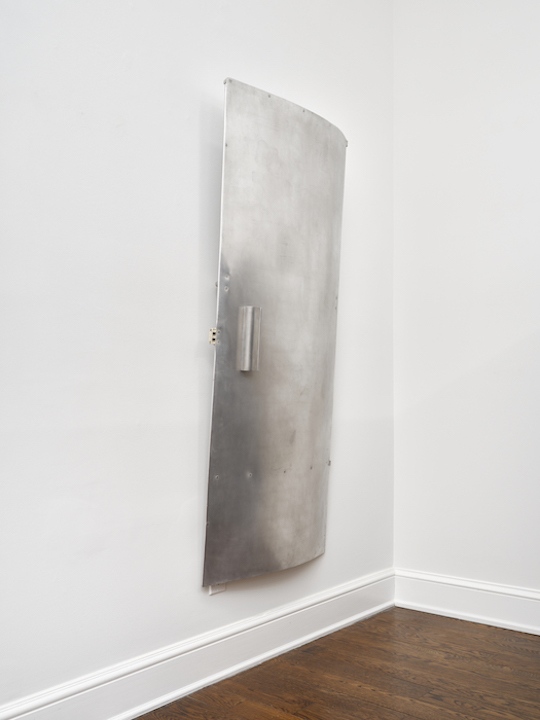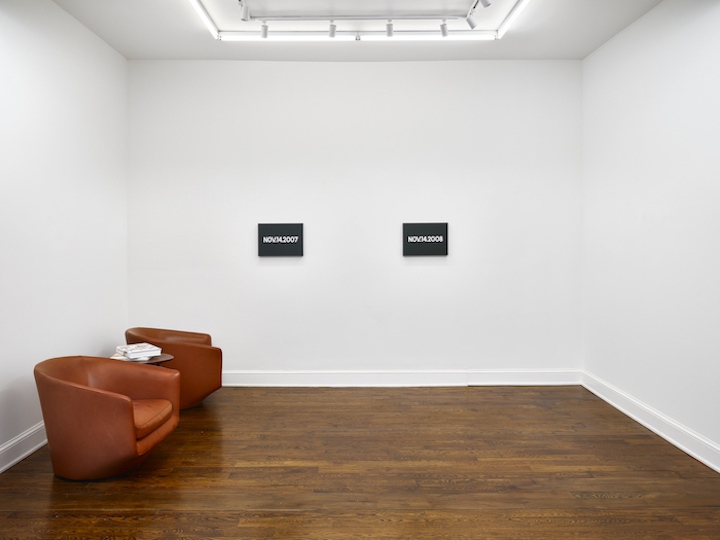Press Release
As the second installation of our series RELAY, Leo Koenig Inc is delighted to present:
Chambre du Brésil
Le Corbusier | Charlotte Perriand
On Kawara
May 12 through July 9, 2021
Chambre du Brésil references Maison du Brésil which was commissioned in 1952 to provide a residence for Brazilian graduate students in Paris and to promote blossoming relations between the two countries. The planning, construction, and furnishing of the building was fraught with struggle, tales of colorful artifice, and clashing of egos. Ultimately though, Maison Du Brésil remains a work of transcendence through collaboration.
Initially, Le Corbusier was asked to simply aid in the design process and overlook construction of Maison du Brésil by Lucio Costa, the original architect that was commissioned to design the building. After completing initial sketches, however, Le Corbusier made such significant changes to Costa’s ideas that Costa became estranged, and eventually had his name removed from the project.
Le Corbusier, in turn, commissioned designer Charlotte Perriand for the interior spaces and dormitories for the students. This collaboration was beset with fits and stalls, taking much longer than intended to complete. Though careful instructions were given to Ms. Perriand by Le Corbusier, in most instances, she ignored them completely, making the appointments to the rooms undeniably her signature. In the end, Le Corbusier’s trust in Perriand’s talent produced a lesson in simple yet elegant utility.
Fast forward to the years 2020-21, and the mention of Brazil cannot help but bring one pause. They are where we once were in terms of a chaotic political landscape and a raging pandemic. It is only too clear that we can easily arrive at that place again. The inclusion of On Kawara’s date painting 21JUNI2007 within in the “room” is a subtle reminder of this. Referencing June 21, the usual date of the summer solstice in the Northern Hemisphere, and the Winter solstice in the Southern, each hemisphere seems to visit a room that the other once occupied.
Chambre du Brésil embodies a comfortable, contained space where one could start or end the day. Textures and colors hold the occupant’s interest while attendant to all needs. The design is remarkable for its power to remain current to this day. Like Maison du Brésil, the future exists in the now. Meanwhile, On Kawara’s work dutifully marks time and exists in the moment, while reminding us of days past. Throughout, we are buoyed by the optimism inherent in Perriand and Le Corbusier’s belief that better design should be an intrinsic part of the human experience and could be used to create a better society.
Le Corbusier (Swiss, 1887–1965) was the pseudonym for Charles-Édouard Jeanneret, a pioneer of modern architecture, a painter, and a theorist. Born in La Chaux-de-Fonds, Switzerland, Le Corbusier attended the La-Chaux-de-Fonds Art School and studied under architect René Chapallaz,
In 1907, the artist went to Paris to work for Auguste Perret an architect who pioneered the use of reinforced concrete and studied architecture with Josef Hoffman. From 1914 to 1915, he developed Domino House, an architectural model with an open floor plan, columns, and thin walls of reinforced concrete. The theories embodied in Domino House influenced Le Corbusier’s projects for the next decade.
In 1918, he and Amédée Osenfant established a new art movement called Purism. In 1922, Le Corbusier presented an urban design plan called Immeubles Villas. Immeubles Villas, and later his Ville Contemporaine, reflected his belief that modern architectural planning could raise the quality of life for city inhabitants.
Le Corbusier, along with Ludwig Miles Van der Rohe and Walther Gropius was considered to be a pioneer of the International style. In 1935, Le Corbusier published a book on urbanism called The Radiant City. After World War II, Le Corbusier used these ideas to create housing blocks around France, such as the Unité d’Habitation of Marseilles. He also designed the first planned city in India, Chandigarh.
Charlotte Perriand (French 1903-1999) studied at the École de l’Union Centrale des Arts Décoratifs. Two years after completing her studies (1925), she began working as an interior designer. Her research and interest in furniture design led her to collaborate with Le Corbusier and Pierre Jeanneret in the 1920s and 1930s. During this time, she worked on major projects including the Villa Church, the Villa Savoye, the Cité du Réfuge for the French Salvation Army, and the Pavillon Suisse at the Cité Universitaire. In 1934, she began specializing in prefabricated buildings for leisure pursuits, including the Maison au Bord de l’Eau, as well as hotels and mountain shelters.
In 1940, Perriand was appointed as the official advisor on industrial design to the Japanese government and left for Tokyo, returning to France in 1946. All her work thereafter would display a Japanese influence. Major projects followed, notably for Air France (1957-1963) and the Musée National d’Art Moderne in Paris (1963-1965). Perriand’s work has been the subject of many exhibitions, highlighting her “synthesis of the arts” and her singular vision.
On Kawara (1932-2014) started exhibiting in Tokyo in the early 1950s. His works have been included in numerous conceptual art surveys from Information show at The Museum of Modern Art, New York in 1970 to 1965-1975: Reconsidering the Object of Art at the Museum of Contemporary Art, Los Angeles in 1995. Early solo shows include On Kawara, 1973 – Produktion eines Jahres/One Year’s Production at the Kunsthalle Bern and the Palais des Beaux-Arts, Brussels in 1974; On Kawara: continuity/discontinuity 1963-1979, first on view at the Moderna Museet in Stockholm in 1980 and traveled to the Museum Folkwang, Essen, Germany, Van Abbemuseum, Eindhoven, The Netherlands, and the National Museum of Art, Osaka; On Kawara: Date Paintings in 89 Cities, toured from 1991 to 1993 to the Museum Boijmans Van Beuningen, Rotterdam to Deichtorhallen Hamburg, Museum of Fine Arts, Boston, and the San Francisco Museum of Modern Art; On Kawara: Whole and Parts 1964-1995, from 1996 to 1998 at the Nouveau Musée/Institut d’art Contemporain, Villeurbanne, France, Castello di Rivoli, Turin, Museu d’Art Contemporani de Barcelona, Musée d’Art Moderne, Villeneuve d’Ascq, France, and the Museum of Contemporary Art, Tokyo; and On Kawara: Horizontality/Verticality at the Städtischen Galerie im Lenbachhaus und Kunstbau München, Munich and Museum Ludwig, Cologne in 2000 to 2001.
Chambre du Brésil is the second of a series of paired exhibitions to be shown at Leo Koenig Inc. entitled
RELAY:
Peter Dreher / On Kawara : February though April
Le Corbusier|Charlotte Perriand / On Kawara: May through July
Le Corbusier / Sherrie Levine : July through September
Sherrie Levine / Wolfgang Tillmans : October through November
LKI is observing COVID protocols and masks are required to visit. Gallery hours are Wed-Friday 11-6 pm. Appointments are appreciated.
